If you follow me on Instagram, you recently saw a photo of my son sleeping with a book in his arms. Maybe that’s a common occurrence in your home, but that was a first-time-ever incident for me. To wake up and look over at my sweet boy (he’d made a pallet on the floor at the side of my bed that night) holding on to a cherished treasure just made my day. I decided then and there that I had to tell you guys about this book.
The links in this post are Amazon affiliate links, so I may receive a small amount of compensation if you make a purchase, at no additional cost to you. Thank you for your support.
My son’s beloved book, Tobe, was published in 1939. It’s a story about a black farming family full of kids living and loving in North Carolina, and it was written by a white woman named Stella Gentry Sharpe. If you heard my recent talk on Mirrors and Windows, then you know that #OwnVoices is an important concept to me, and you may be wondering how I can reconcile that concept with this book recommendation.
#OwnVoices is a term coined by the writer Corinne Duyvis and refers to an author from a marginalized or under-represented group writing about their own experiences from their own perspective, rather than someone from an outside perspective writing as a character from an underrepresented group.
So this book clearly doesn’t meet that standard. The entire book represents an inside view of a world in which Sharpe was merely a voyeur. So did she have the right to tell the story? Should we bother to read what she had to say? I try to ask myself these questions every time I choose a book for my children, and my general answer is that “it depends.”
Some people simply will not purchase or read any books about certain groups of people written by an author who is not part of that group. I understand the sentiment, and sometimes I agree, but I like to look critically at each book rather than create a rule. Doing a poor job telling a story is a travesty no matter the situation, but I believe that a righteous story deserves to be heard regardless of who is telling it. And the back story matters…
“The dust jacket from the [original] 1939 book offers the first story behind the story. It recounts that in the mid-1930s, an African American boy asked his neighbor, a white schoolteacher, a simple question: “Why does no one in my books look like me?” She began to wonder the same thing and set out to write a different kind of children’s book: one that featured African American characters in a way that countered the grossly stereotyped depictions in most children’s literature of the time. This would be a dignified, true-to-life story of her young neighbor and his family. It would be Tobe’s story.”
– Benjamin Filene, Tobe: A Critical Edition, New Views on a Children’s Classic
When I read that, I decided to give the book a chance because I felt that she sought to do a sweet thing. She could have thought, “I should not tell this story. I should leave it for a black person to tell.” But in 1939, books like these were not being made, she had the opportunity to tell the story in a respectful way, she took the opportunity, and I’m glad she did. Now I could spend some time here writing about the many issues with why it would have been nearly impossible to get the publisher to put out the same book by a black author at that time. And I could also discuss how many of those same barriers continue to persist in today’s publishing world. But for the purposes of this review, I’m going to stick with the evaluation of the book in a vacuum – without the ancillary considerations and broader implications. Please don’t take my choice to not consider these other aspects of the importance of #OwnVoices as a dismissal but rather a desire to focus on just the book itself…for today.
“Stella Sharpe described Tobe as “a story of Negro life as it actually appears.” Indeed, at a glance, the book looks like a work of documentary. It features black-and-white photographs of real people (not actors) going about their daily lives, shows pictures from a real farm (not a stage set or studio), and uses real names. Supporting the documentary impression, many people who grew up with the farm life that Tobe depicts say the book rings true, and the actual people in the photos feel the book chronicles their life.”
When Sharpe wrote the book, few people were writing respectful books about black families living family life. She was not the first, but she was among the renegades. A trailblazer in her own way. She depicted African American children as “wholesome and striving, as vessels of hope” and as scholar Katherine Capshaw writes about American photobooks of a somewhat later period,
“To represent an innocent black child is an act of resistance in and of itself: it permits resistance to racist systems of power that malign and distort blackness through caricature; it enables resistance to the exclusion of black childhood from the terrain of childhood innocence.
Here’s an inside peek at the book:
If you’re short on time and looking for a great early reading book for your family, you can stop here and purchase Tobe, but if you totally want to geek out with me on this, I’m going to keep going:
All of my research on this book came from Tobe: A Critical Edition, New Views on a Children’s Classic, a remarkably honest and balanced critical review written by Benjamin Filene. I really want to share his entire book with you because it is incredibly intriguing as he opens up questions of “race, voice, and power in ways that encourage fruitful conversation and resist easy answers.”
For instance, he offers additional commentary on Katherine Capshaw’s compelling quote above when he discusses how “this sort of cultural politics challenges oppression only indirectly.” As I was reading this, I sat up in bed and took note because I knew he was about to drop the mic.
Filene dug so deeply into this story. He was able to show before and after photos revealing how some things had been altered and staged to better fit the narrative. He even explains some of the inconsistencies presented in this book:
“Sometimes the effort to depict the children as happy and hardworking led to curious choices. If the boys look awkward in the photo as they handle the cotton, for instance, it is because they were on unfamiliar ground. UNC Press had decided that any book about the rural South had to depict cotton picking, even though that was not a crop grown in the piedmont region of North Carolina, where the story takes place. “The cotton story,” Alice Paine wrote from the editor’s office, “is so firmly associated, in the minds of the country at large, with the South that it’s omission might be noticed.” To young Ted Herbin, who appears in the book’s photographs as Big Boy, the resulting experience was disorienting. “They took us to the cotton fields [and showed us] how they raise cotton and cotton gins and all this,” he recalled. “We were tobacco. … That is really strange and new adventures as far as I’m concerned.” To UNC Press, though, it only made sense. Even as the editors wanted Tobe to challenge negative stereotypes about African Americans, they felt that the book needed to work within conventional expectations. As Paine explained, “The cotton story … has a moral … and it is hard to make a moral out of the tobacco industry.” Cotton was the vehicle needed to show African American families as hardworking.“
-Benjamin Filene, emphasis mine
There goes that cotton thing again. Associating black people with cotton seems to have been an obsession, even long after enslavement ended. If you read my post on When “Really Good” Books Hurt, then you know that I’ve run into this whole cotton thing before. However, in this story, it works if I choose to suspend my disbelief. For my son’s purposes, it really doesn’t matter whether it was cotton or tobacco, so I press on.
“In her plot and word choices, Sharpe at every turn counters the stereotyped depictions of African Americans in earlier children’s books. Tobe’s world – the one literally bound together within the book’s pages – is a tight-knit, happy African American community that prizes hard work, cleanliness, fun, and family. It’s remarkably self-contained…Church is the only place where we see community members beyond the realms of home and extended life…Interaction with the wider world – and with whites – is practically nonexistent. At one point, the boys help “Mr. Pender” harvest his wheat…Santa Claus zips in, hands out bags from his car, and zips out. Implicitly, these authority figures (who appear to be white) stand above the black characters, as supervisors and gift-givers; in that sense, the book does not challenge racial hierarchies. But more notable is how peripheral the white characters seem to this world. No one exchanges dialogue with them, and once they leave the scene, life goes on as before.”
– Benjamin Filene, emphasis mine
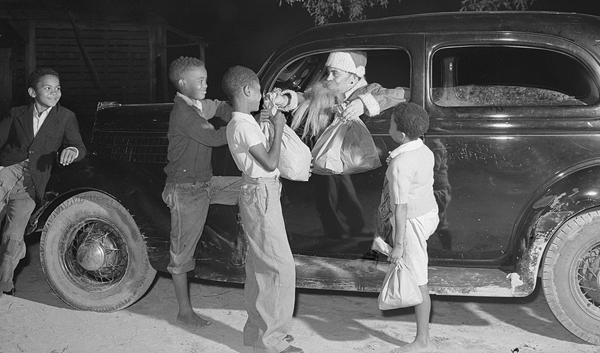
Speaking of Santa Claus…
This page is the one thing my son called out as being inauthentic. He wasn’t upset by the Santa photo, but he giggled when he turned to this page and said, “Their Santa is white!”
He just found it to be the funniest thing because he’s never seen a white Santa Claus pictured or depicted in a black home. He knows that Santa is a make-believe character, so he’s never questioned the fact that Santa stuff is black in our home (and the homes of every black person we know) and yet he is white in most stores and in the homes of our white friends. What did seem weird to him was that this book would have a white Santa.
Take it for what it’s worth. He said it – not me. But out of the mouths of babes.
In the oral interviews recorded by Filene,
“Goshen residents who had been children when Tobe was published mostly recall feeling proud when they saw it in their library. Some who went on to become teachers recall that they taught the book in their classrooms. Charles Garner, photographed as Tobe, came back to Goshen for the seventy-fifth anniversary of the book’s publication and shared his recollections at the New Goshen United Methodist Church, whose building was photographed for Tobe when it was the neighborhood school. The congregation embraced him as a favorite son and returning celebrity.”
And even more telling is the fact that multiple advertisements for Tobe appeared in The Crisis, the magazine of the National Association for the Advancement of Colored People, which W. E. B. DuBois had founded in 1910. One ad stated, “The profusely illustrated story of a little North Carolina colored lad makes a really ideal present for children from five to ten years old” while another ad from The Crisis Book Shop, this one full-page, expands on the theme under the headline “Solving the Book Problem for Our Children”:
It isn’t easy to get “safe” books for our children.
Even the most touted are apt to miscue on “race.”
Even the best written are apt to contain distasteful references or pictures.
Wise parents want to instill pride instead of prejudice … [and] educate right.
“The Best Solution to the Book Problem for First Readers,” the ad continues (with color-blind aspirations that seem incongruous to twenty-first-century ears), is Tobe: “One hundred and seventeen pages of the lives of little colored children, with no suggestion whatever of ‘race’ or color.”
Amen! Amen! Amen! And that’s what I feel about this book. Even today, in 2020, many books still are not “safe” for my babies. And Tobe offered me some relief from trying to edit, voice-over, hide, and pre-read. My son could freely carry this little book around with him and read it at his leisure. He could even sleep with it!
The fact that black people of that time, in that place, took pride in Sharpe’s work is another indication that she took her work seriously and did what she could to bring dignity to her subjects. That goes a long way with me.
Hindsight is 20/20, so today we can look back at Tobe and see where Sharpe took some missteps. I didn’t have time to get into all of them today, but if you’re interested in the specifics, you may find Filene’s critical review as fascinating as I did. In any case, those missteps don’t take away the power of what she created and how it’s still impacting my son today. She did some things out of ignorance, and she clearly made concessions in order to get the book published. Could she have gotten in published otherwise? We’ll never truly know, but given the environment in which she was writing, I suspect that we would not have the book today if she had taken a hard stance on fairly inconsequential (to my son) details.
It would be so easy to toss this book aside as our enlightened perspectives see the cracks in Tobe’s veneer.
But I, for one, choose to just be thankful.
You can find me on Instagram @heritagemomblog.
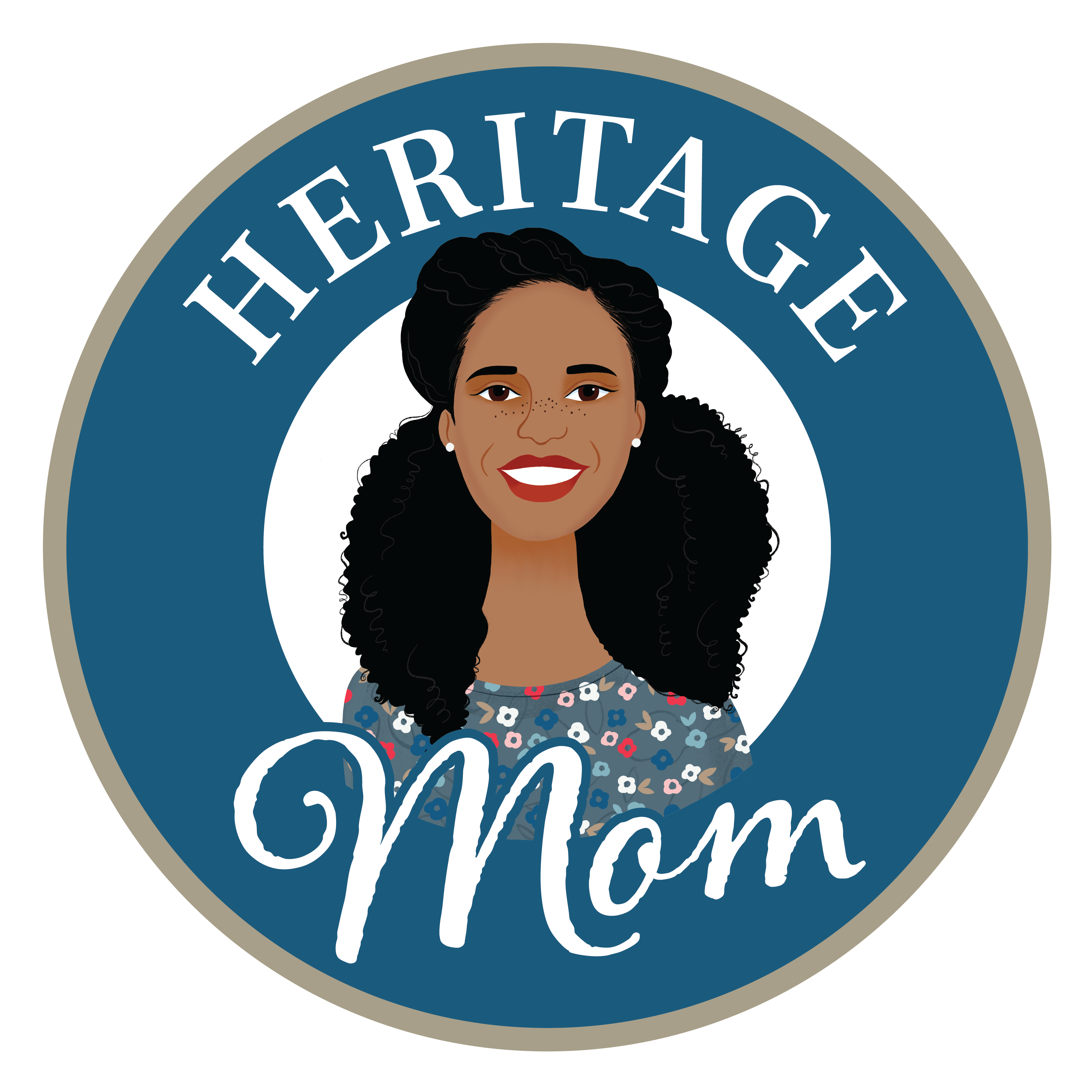
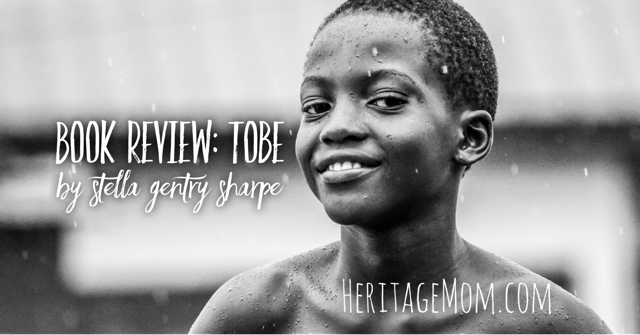
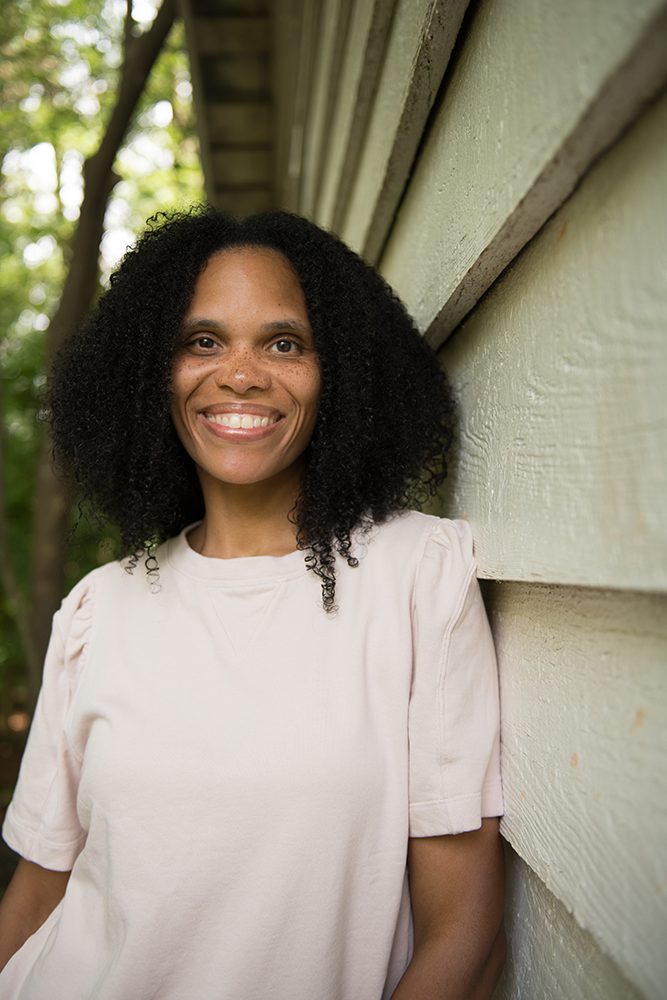
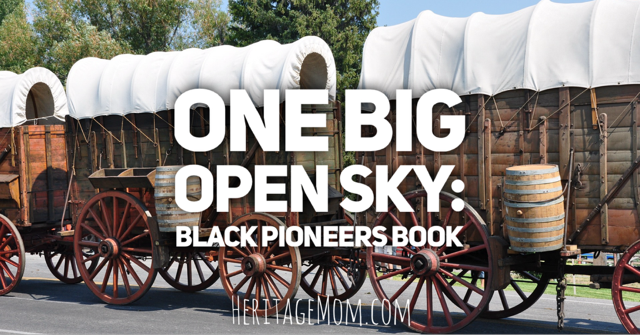
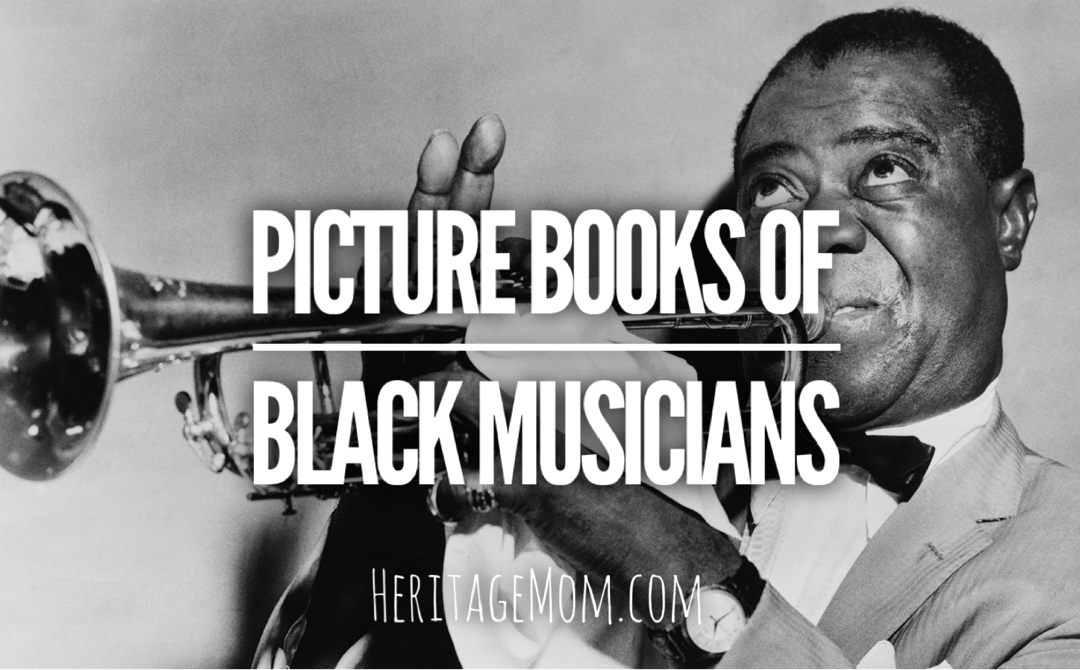
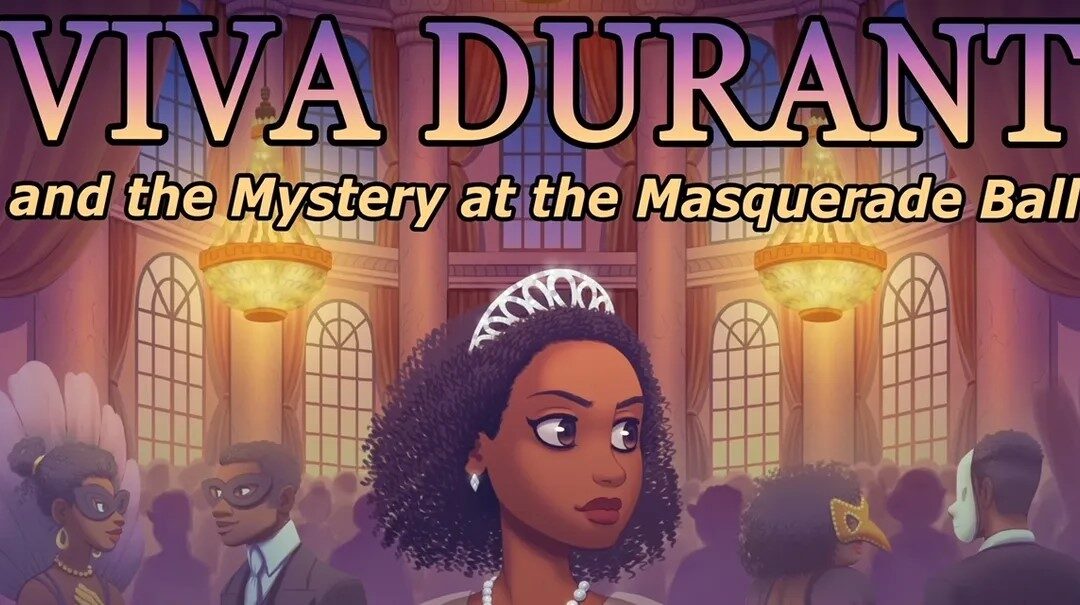
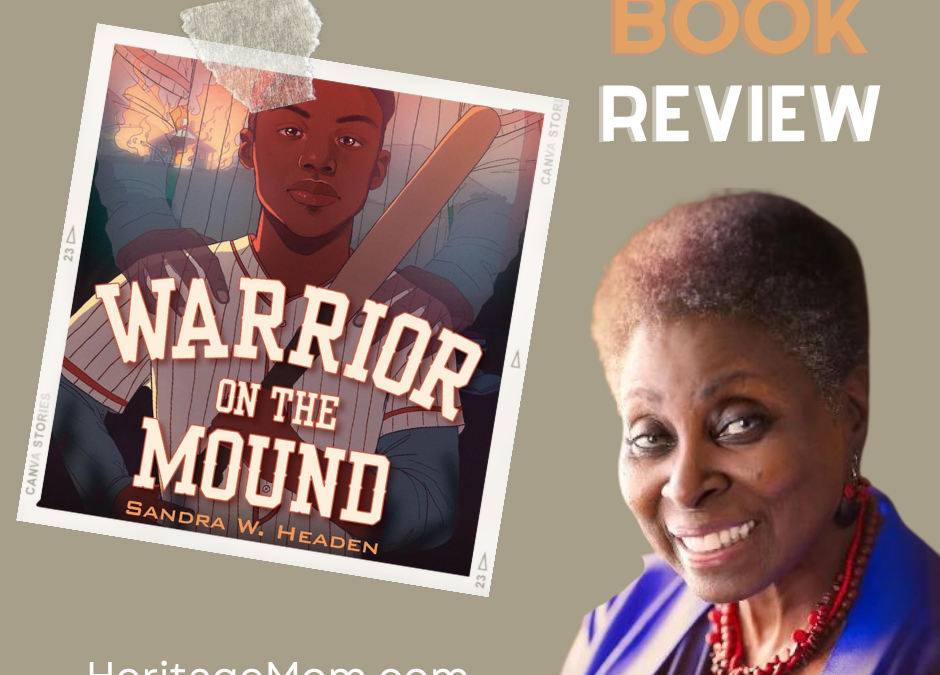
What a thoughtful review! I’ll definitely read the Filene review too. I appreciate your thoughts about the cotton over tobacco… I’m ashamed to say I wouldn’t have picked up on that because both are such prevalent crops where I grew up… and I’m still learning. Thank you!!!
Oh don’t be ashamed for even a second! The only reason it resonated with me is that I used to live in NC where tobacco is KING and I have a particular sensitivity to the cotton thing because I’ve seen it used to demean black people in so many books. It also is sometimes used in very realistic and good or neutral ways, so it depends. But anyway, I didn’t catch a lot of the “issues” in this book until Filene’s review opened my eyes.
Natalia loved this book! She shared excitedly after reading each section. Thanks for the recommendation.
Yay! You’re so welcome. I’m really glad that she liked it!
Wanted to say I bought this book at your recommendation (which was incredibly thorough and sharp and wise). It’s gorgeous and your framing (along with BF’s quotes) is so helpful to my reading of it with my kiddos. We live in farm country in NW Indiana and I have been researching the history of African American farming in our area (it was prevalent before Jim Crow and virtually non-existent today). I’m grateful for this book’s showing rural life in a non-white context (which is really hard to find). 💗💗
Michelle, I really appreciate you taking the time to come back and share your thoughts. I’ve been looking for more books like Tobe ever since my son fell in love with it, and I haven’t come up with anything close. I found a couple of documentary-type books, but they focus a lot on racism and negative experiences. Totally fine, but not the sweet innocence mirrored in this book. Anyway, I’m glad that it hit home with you in terms of being in farm country. That’s a really cool connection!
I knew Mrs Sharpe, growing up. She was a retired teacher, that tutored all the neighborhood kids.
She died in a Nursing home, and had Alzheimer’s when she died.
Sue Dodson
Wow! It’s wonderful that you knew her. I’m so sorry to hear that she suffered from Alzheimer’s near the end of her life. I would have liked to meet her.
I read the book as a child. I grew up on the campus of HBCUs – my father was a professor and administrator. I am black and 82 years old. We loved the book – my brothers and I, and my 3 children loved it too. We had a lot of books but very few had any black children in them. I still have my book – which is disheveled and falling apart after the 3 children in my original family and my own family read it. It’s also written on and to me shows that the children who had it loved it. Thank you for your comments.
I hope to find an original one to give to my grandchildren.
No book or no one is perfect so it angers, not annoys, but angers me that standards that apply to many, if not most, children’s book are applied to this one. Don’t most parents want their children to grow up knowing how to work, and seeing their parents work hard? And sure, back then the girls did one thing and the boys did something else – but isn’t this a good way to show children now what it was that way?
I’m so glad that you found my post and took the time to comment. Tobe is a beloved book in our home as well, and I look forward to cherishing our copy for years to come.
Hello! I was wondering if you know how to get this book for less than $60 dollars 😅 Looking for a chapter book read aloud for my five year old and this looked great!
I wish that I did! It’s definitely a book that I’d like to see being published again. I think your best bet is to see if your library can get a copy for you. Because it was published by UNC Press, I feel like there may be a possibility of interlibrary loan or something similar. And just know that I’m working on my end to get my hand on some copies to share as well!
I just came across this book in an antique store, never having heard of it. I wondered how well known it was and what kind of reception it might have gotten, both then and now. I’m thrilled to find this incredibly thoughtful and informative blog post among the first search results!
I’m so pleased to know that you found my review helpful. It’s been several years, and Tobe remains a special book in our home. I hope you bought the copy you found! If so, you have a special treat!